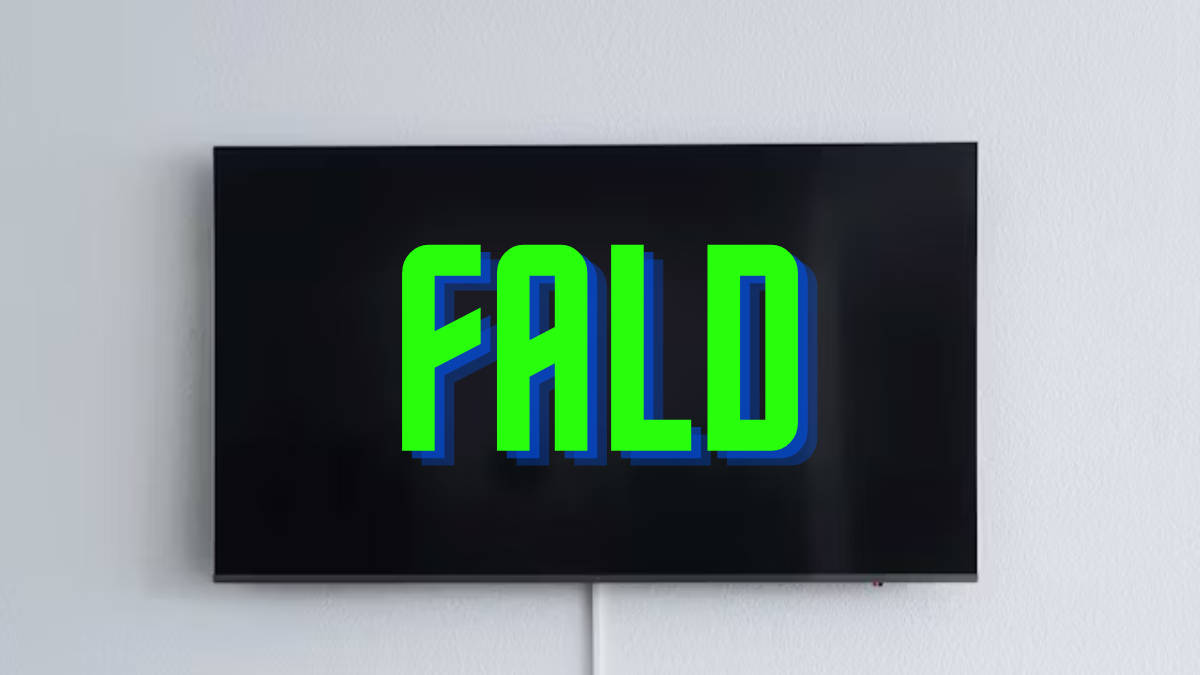
When you are out in the market to buy a new TV, you may come across the term Full Array Local Dimming or FALD. FALD is a modern backlight technology in LCD TVs and monitors, that presents more lighting zones and allows for better contrasts. Simply put, it enhances the TV’s picture quality. So, let’s learn the FALD tech in depth, including how it differs from other LCD types, its pros, cons and more.
Table of Contents
What is Full Array Local Dimming? How does FALD work?
As you may know, an LCD TV consists of an LED backlight or an arrangement of a group of LEDs called zones. These LED zones can be zonally/locally lit up or dimmed. This process is called Local Dimming.
What is it: FALD is a type of local dimming that offers a full array of backlight zones arranged in a grid behind the screen. There can be anywhere between a dozen LED zones to even hundreds.
How it works: This FALD arrangement allows for granular backlighting control. Such a TV can selectively or independently dim the backlight for darker regions in a frame such that the blacks look blacker. On the flip side, the highlight regions could be lit up, resulting in a good contrast.
How to check dimming zones on my TV: Play the following video on a FALD TV in full screen in a dark room and ensure the contrast is set to the maximum. Count the rows and columns and multiply them to find the TV’s zone count.
Full Array Local Dimming vs Edge-lit Local Dimming difference
The backlighting tech before FALD is called Edge-lit, wherein the backlight zone is present only on the edges (generally two sides like the top and the bottom sides).
The edge light zones can’t control backlighting for the entirety of the screen as effectively as a Full Array Local Dimming. So, some black portions on the screen may look dark grey. And the overall picture quality could get worse on an inferior TV.
Moreover, Edge-lit displays could be more susceptible to artefacts like blooming (halo effect around bright elements on the screen), bleeding (light around the edges of the screen), black crush (loss of details in the dark portions), etc.
| Type | Edge-lit | FALD |
| LED placement | On the edges | Behind the entire LCD panel |
| Dimming control | Not granular | Individual dimming |
| Black levels | Blacks could appear grey | Deeper blacks |
| Contrast ratio | Higher contrasts | Lower contrasts |
| Build | Thinner and lighter | Thicker and bulkier |
| Price | Lower | Higher |
So, now that you know FALD is an upgrade over Edge-lit LCD technology, let’s understand its pros and cons:
Full Array Local Dimming benefits
- Since FALD displays can individually control various LED zones present behind the screen, the black portions of a picture could be dimmed and look blacker than an edge-lit LCD.
- Due to the granular LED lighting control, LEDs present in a zone can be uniformly lit to produce colours evenly across the canvas.
- Since FALDs are based on existing LCD technology, they are relatively affordable to manufacture, compared to an entirely different and newer tech like OLED.
Full Array Local Dimming drawbacks
- FALD is not as common as conventional LED TVs (edge-lit or direct LED with no local dimming) as it is more expensive technology than older LCD tech.
- Since there are no broadly accepted quality standards, FALD application on budget and mid-range TVs could differ in terms of the number of lighting zones.
- Inferior FALD screens could suffer from blooming, poor viewing angles and colour unevenness.
FAQs
What’s the difference between FALD and OLED?
OLEDs are a superior technology to FALD in terms of reproducing colours (including black), viewing angles, refresh rate, and energy efficiency. They allow for individual pixel dimming and the OLED TVs are thinner also. But, they can have burn-in risks and are more expensive to buy. In comparison, FALD TVs will have reduced burn-in risk, a longer life span, and a low price.
What’s the difference between FALD and Mini LED?
Mini LED is an upgrade over FALD and so, it also has a backlight panel behind the LCD screen consisting of hundreds or even thousands of smaller LEDs. The size of the Mini LEDs is way smaller than that on a traditional FALD screen. This lets even better control of the backlighting. Thus Mini LED TVs are better in terms of colour reproduction, contrasts and HDR playback.
Can blooming be fully eliminated with FALD?
No blooming can be eliminated with FALD since it depends on the number of dimming zones, the dimming algorithm, and the processing chops of the TV. However, blooming can be effectively controlled by better TV hardware and software capabilities.
What’s the difference between FALD and Direct LED?
Direct LED TVs have LEDs across the back of the panel and include FALD TVs as well as TVs without local dimming. FALD is the better kind of Direct LED TV since they are capable of locally dimming and therefore offers better controls on LED dimming for picture quality.

















